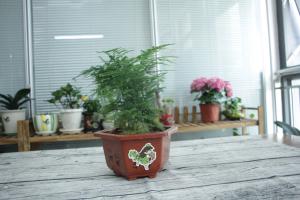Are You Allowed to Plant Trees on Public Land?
As concerned citizens, many of us feel that planting trees on public land can help bring a healthier environment for ourselves and the community. However, before planting trees on public land, it is essential to make sure that it is legal and safe to do so.
Research Local Laws and Regulations
The first step in deciding whether you can plant trees on public land is to research local laws and regulations. Each country, state, or municipality may have different regulations regarding public land use. Some areas may require obtaining permits or approval from a government agency before planting trees. In other cases, there may be restrictions on the type or location of trees you can plant. Contact your local city hall or government agency to find out what the requirements are in your area.
Benefits of Planting Trees on Public Land
Planting trees on public land can bring a wide range of benefits. Trees are known to help reduce air pollution and provide oxygen for the environment, creating a more positive and healthy atmosphere. Additionally, trees help in the conservation of water resources, reduce noise pollution, provide habitats for wildlife, and enhance the overall beauty of the area. By planting trees on public land, you contribute to the well-being of yourself and the community.
Potential Risks of Planting Trees on Public Land
However, planting trees on public land can come with risks. Trees that are poorly maintained or improperly planted can be hazardous, especially during extreme weather events. Falling branches or roots can cause damage to property or harm pedestrians. Trees also require regular maintenance, which can become a burden to the city or local government. To avoid any potential risks, it's important to follow proper tree care and maintenance practices and seek professional assistance if necessary.
Alternative Ways to Plant Trees
If you are not allowed to plant trees on public land, there are alternative ways to contribute to a greener environment. For example, you can purchase a tree from a local nursery and plant it on your own property. You can also participate in tree-planting programs organized by local groups or government agencies. These programs can help you make a positive impact on the environment while following necessary regulations and guidelines.
Conclusion
Planting trees on public land can bring several benefits to the environment and the community. However, it's critical to check local laws and regulations to understand what options are available in your area. Always follow proper tree care and maintenance practices to mitigate potential risks, and consider alternative ways to contribute to sustainable planting programs in your local community.

 how many times do yo...
how many times do yo... how many planted tre...
how many planted tre... how many pine trees ...
how many pine trees ... how many pecan trees...
how many pecan trees... how many plants comp...
how many plants comp... how many plants can ...
how many plants can ... how many plants and ...
how many plants and ... how many pepper plan...
how many pepper plan...

































